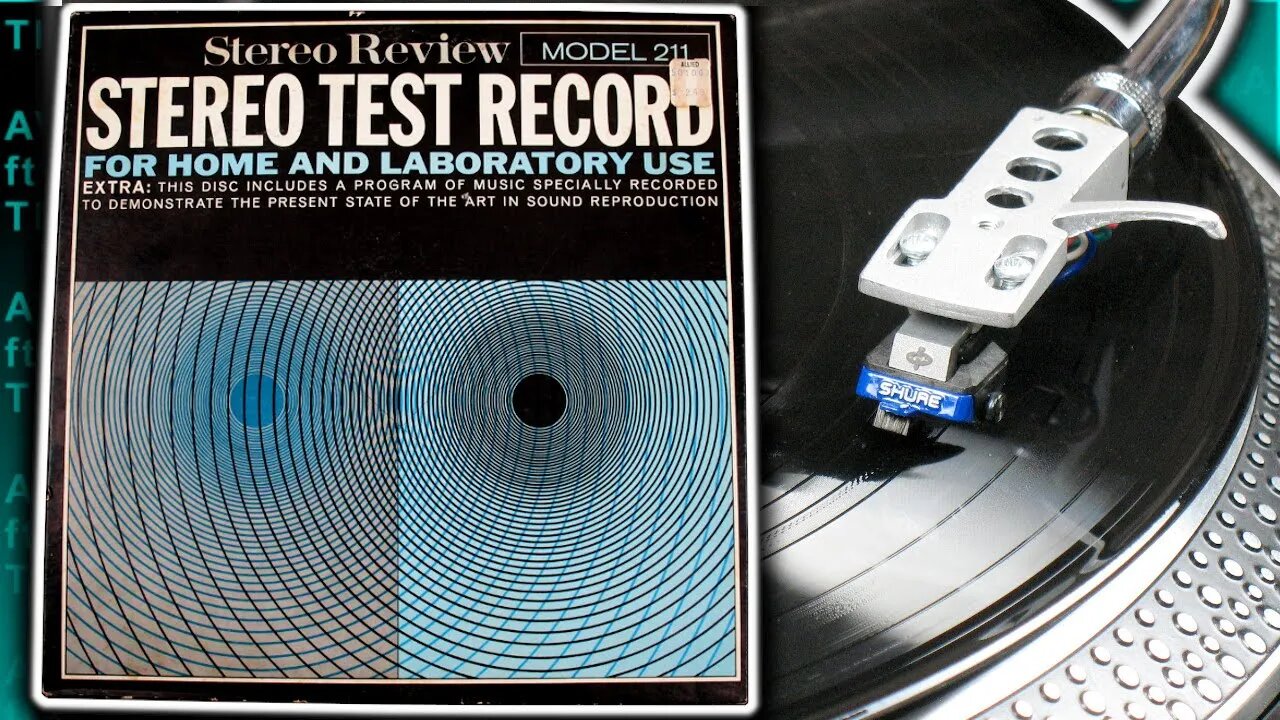Premium Only Content

Setup your vinyl by EAR! 1963 Test LP on a 2020 Turntable | Stereo Review Test Record
In this video, I evaluate my turntable using the Stereo Review Stereo Test Record, Model 211, produced by HIFI / Stereo Review in 1963. For Home and Laboratory Use. Extra: This Disc Includes a Program of Music Specially Recorded to Demonstrate the Present State of the Art in Sound Reproduction.
Through the links below, ThriftyAV receives a small commission at no additional cost to the buyer.
This LP is no longer manufactured. But modern Test LPs include:
HIFI NEWS - Test LP Producer's Cut
https://amzn.to/2XjhD2Q
Ultimate Analogue Test LP for Precise Turntable Setup
https://amzn.to/2Md1zJl
Text printed on this record:
Nothing other than the human ear is required to use this highly efficient and accurate tool for setting up, adjusting, and evaluating stereo systems.
Here is a summary of the tests on the Model 211 test record (a complete instruction booklet is enclosed with the record):
1. SPEAKER PHASING AND CHANNEL IDENTIFICATION: Quick, simple checks for setting up stereo speakers.
2. CHANNEL BALANCE: Two independent white-noise signals are simultaneously reproduced, one through each speaker, permitting the channel levels to be closely matched. Differences in tonal characteristics between the two channels can also be corrected.
3. FREQUENCY RESPONSE: Each of the tones on this test is a warble tone, which moves rapidly up and down over a short portion of the audio spectrum. This greatly reduces the distorting effect of the room acoustics, which can increase or decrease the sound level at particular frequencies, especially in the bass. The warble tones make it possible to hear what the system is actually doing in each frequency segment, and each segment can be compared with a reference tone played immediatly before and after it. This enables the listener to determine the best seating positions and the best speaker placements for smooth, strong bass output. Over-all, the frequency-response tests cover frequencies from 20 to 20,000 cps (Hz).
4. CARTRIDGE EVALUATION: The amount of tracking weight required to trace a high-level low-frequency tone is first determined. Then a similar check is made with a high-frequency tone. The results of these tests are analyzed. Then, to check the cartridge's tendency to produce distortion, several selections of recorded music with reduced treble content but with higher and higher levels of modulation are played. This test pinpoints any buzzing or blurring. The test is then repeated, but this time the recorded selection has reduced bass content, to reveal mistracking and shattering. Over-all, these four tests furnish an accurate picture of a cartridge's capabilities, and also provide a means for adjusting the record-playback system for best operation.
5. STEREO SEPARATION: The warble-tone technique permits the listener to make a direct ear check of the extent to which stereo separation exceeds or falls below 15db in seven ranges of the audio spectrum.
6. STEREO SPREAD: This test permits the listener to determine whether the stereo system is providing a full, even spread of stereo sound, with no "hole in the middle." Two snare drums are used. The first one should appear to be positioned precisely between the two speakers. Then, alternating beats with the stationary center drum, another drum starts at the far left and slowely moves all the way to the far right. If the system's stereo projection is good, the listener will be able to follow the apparent movement of the second drum perfectly.
7. EFFECTIVE HUM: This test enables the listener to evaluate the over-all hum level of his system, taking into consideration all factors - room acoustics, ambient noise, the ear's increased sensitivity to rumble at higher frequencies, etc.
8. RUMBLE: Similar to the hum-evaluation test above, this check evaluates the rumble level in terms of the same factors as in the hum test above.
9. FLUTTER: A series of sustained piano chords is repeated four times, each time with an increasing amount of deliberately introduced flutter. Since the flutter on the record will mask the flutter produced by the playback turntable, the first recorded passage in which the listener can discern flutter indicates the amount of flutter produced by the playback turntable.
Copyright 1963 Ziff-Davis Publishing Company, New York, NY.
Patreon pledges help keep ThriftyAV going:
https://www.patreon.com/ThriftyAV
Pledge $1+ per month for Patron Exclusive Content!
Paypal ME contributions can be offered HERE:
paypal.me/ThriftyAV
Bitcoin (BTC) contributions are appreciated:
bc1q0ht079p05kep43p725qht6xj3w7q2ukjs37azv
ThriftyAV is a participant in the Amazon Services LLC Associates Program, an affiliate advertising program designed to provide a means for sites to earn advertising fees by advertising and linking to Amazon.com.
-
 25:49
25:49
ThriftyAV!
1 year ago $0.01 earnedBetter Standalone Analog Video Capture! The ClonerAlliance ViewLite AV!
52 -
 5:43:19
5:43:19
Bitcoin Magazine
6 hours agoLIVE: MICHAEL SAYLOR'S $100K NYE BITCOIN PARTY
48.4K3 -
 5:06:15
5:06:15
AirCondaTv Gaming
12 hours ago $23.76 earnedOnce Human - New Year. New Meta. Happy New Year!
88.9K13 -
 1:00:37
1:00:37
Bright Insight
10 days agoOlmec Heads are Evidence of Lost Ancient Advanced Civilization
116K227 -
 13:43
13:43
Cooking with Gruel
2 days agoCreamy Saffron Risotto
92.9K20 -
 18:38
18:38
DeVory Darkins
1 day ago $22.39 earnedTrump Makes HUGE Announcement that may spark GOP Battle
63.5K76 -
 2:13:05
2:13:05
The Nerd Realm
11 hours ago $3.52 earnedNew Years Eve! Fortnite Hunters w/ YOU! Creator Code: NERDREALM
54.1K3 -
 11:04:44
11:04:44
FusedAegisTV
1 day agoNYE Eve! - 2025 Incoming 🎉 - 12hr Variety Stream!
114K6 -
 1:18:52
1:18:52
Awaken With JP
14 hours agoSomehow The World DIDN’T End This Year! - LIES Ep 72
154K77 -
 1:19:34
1:19:34
Michael Franzese
12 hours agoWhat 2024 Taught Us About the Future?
124K32